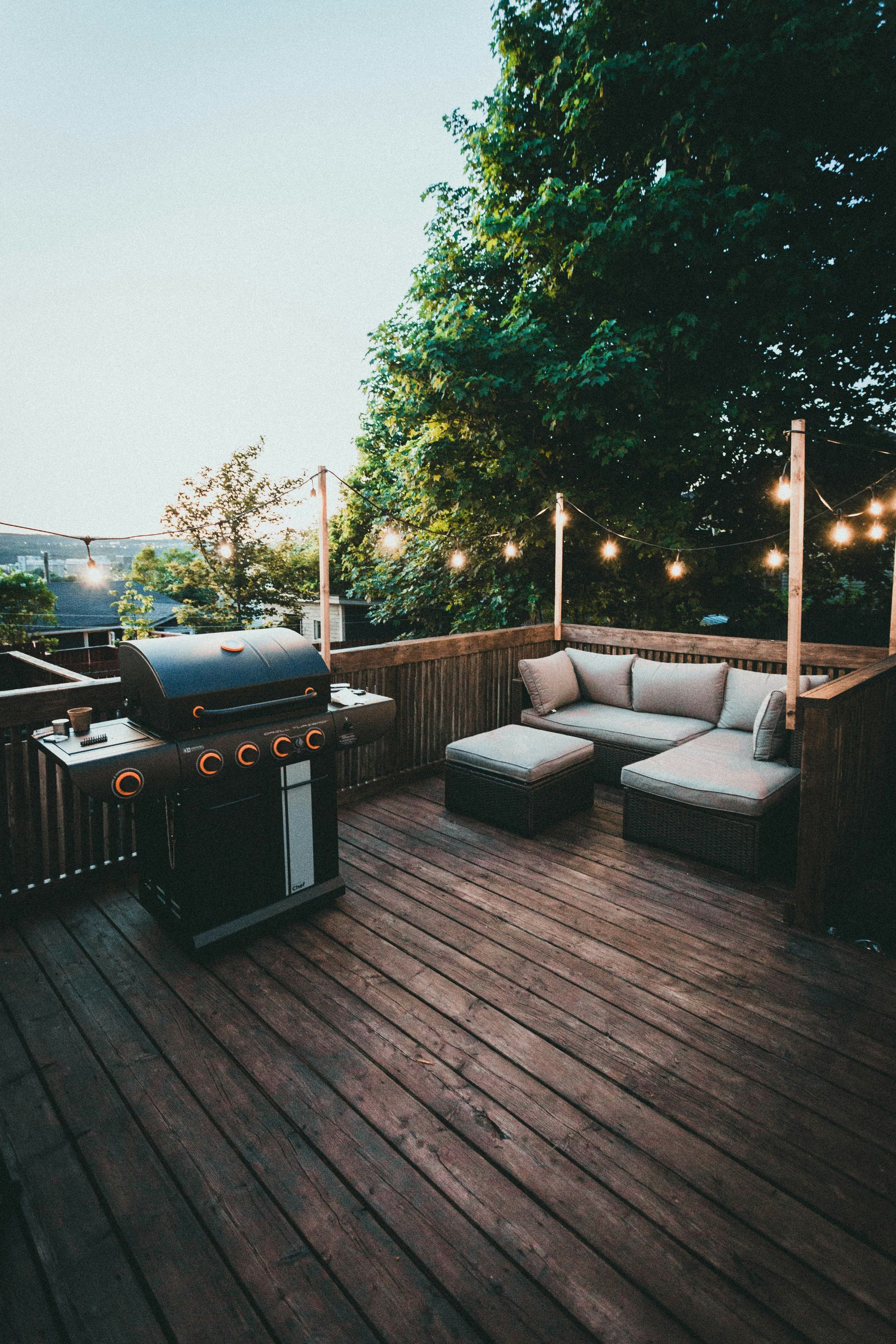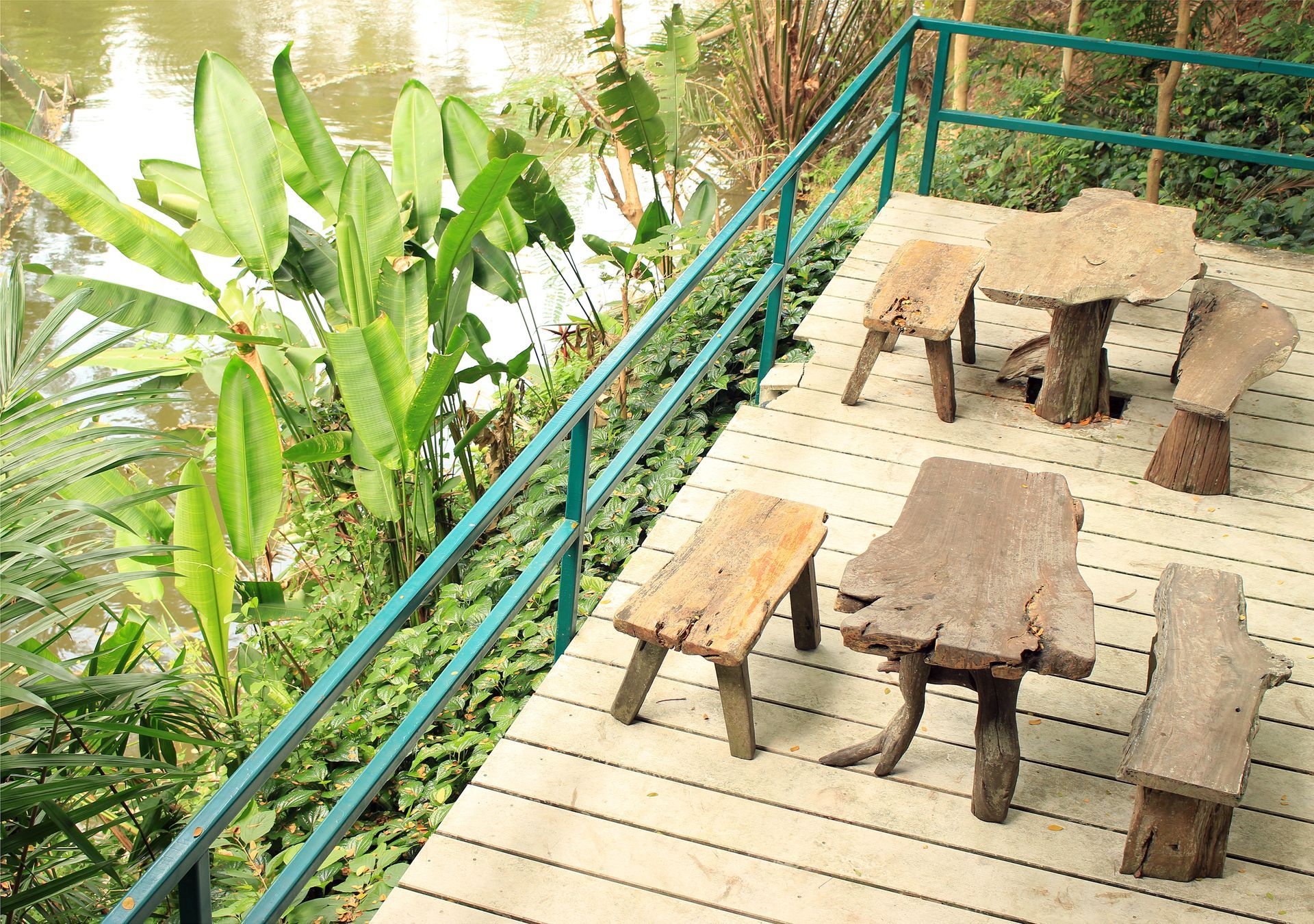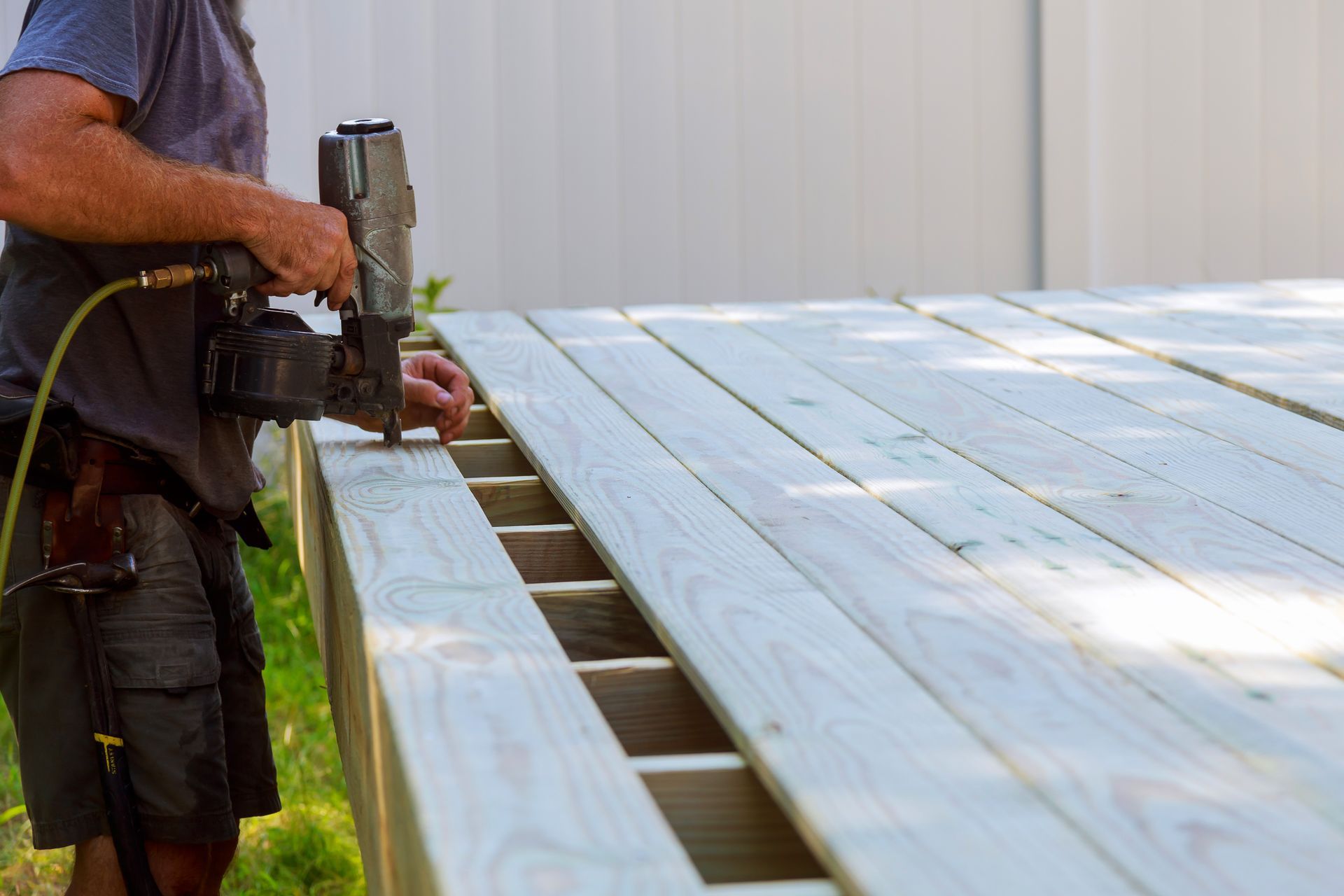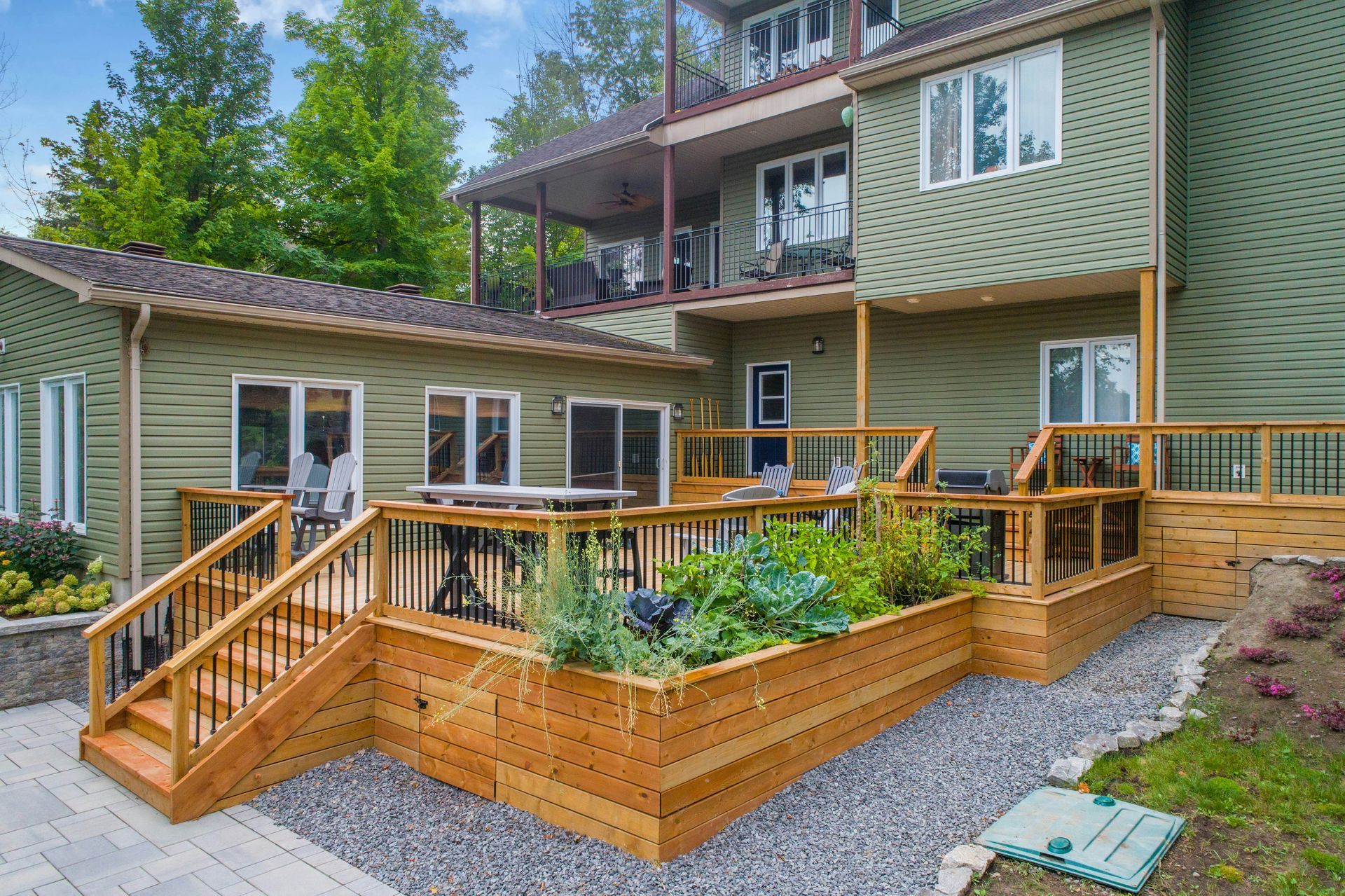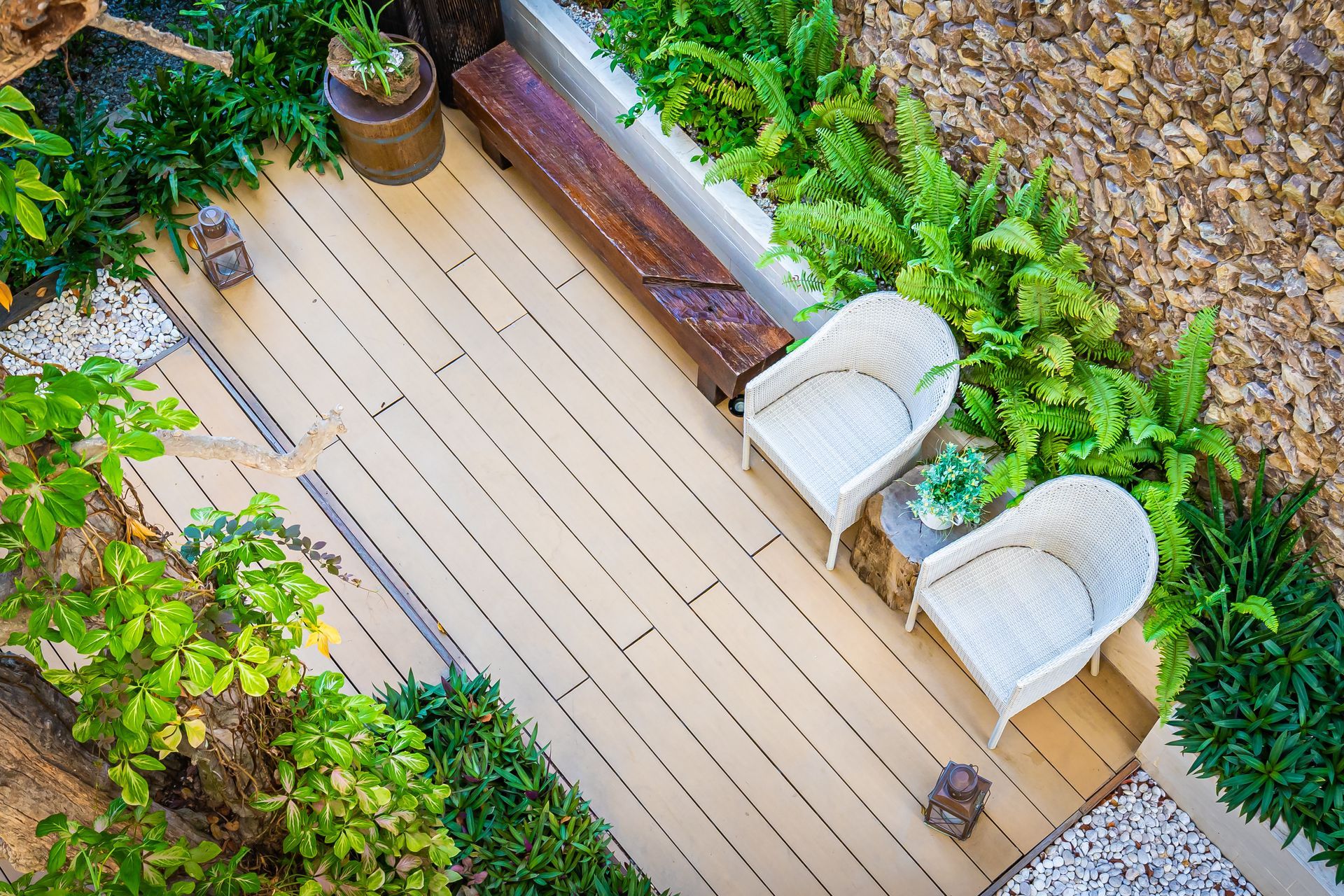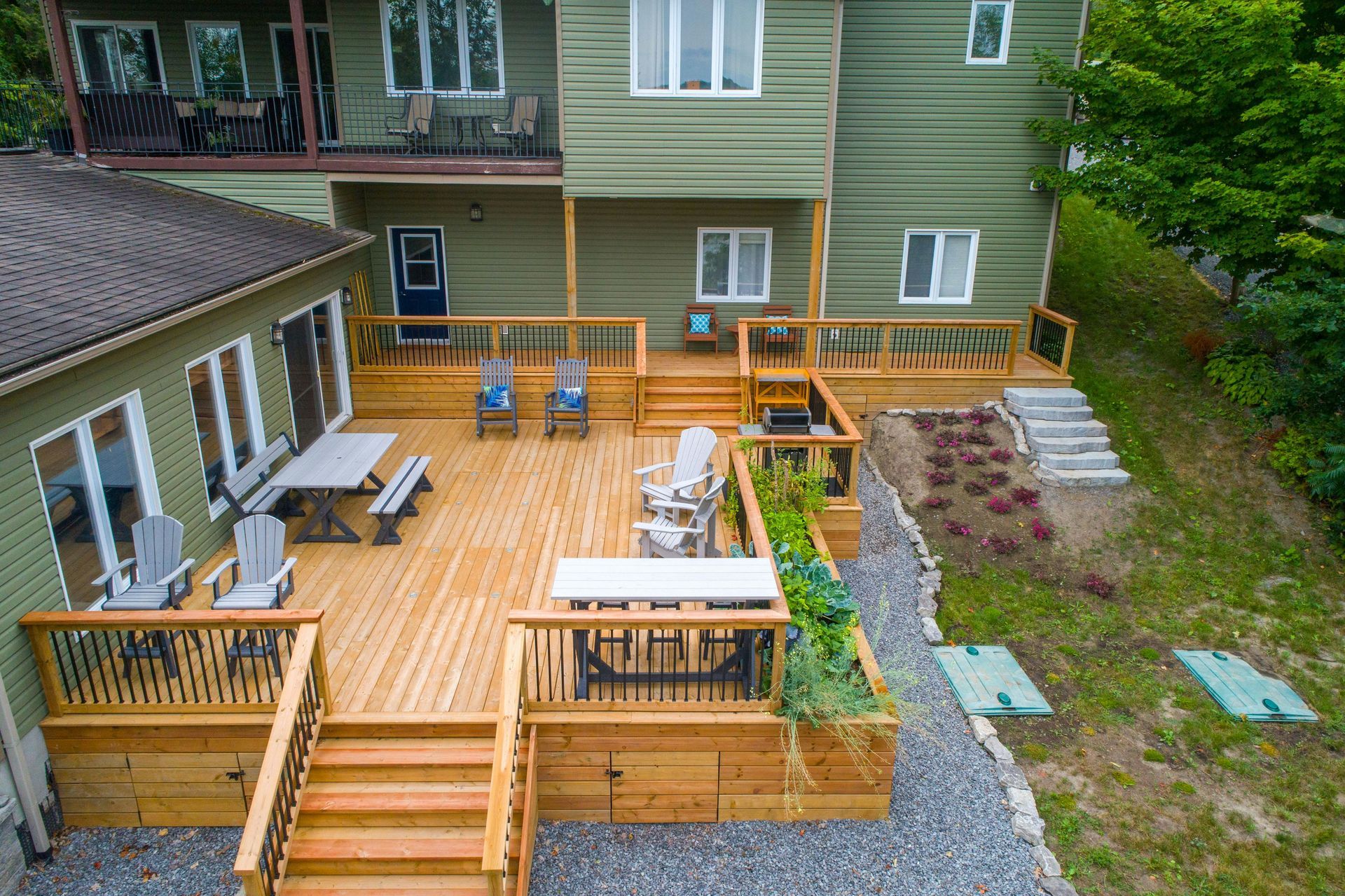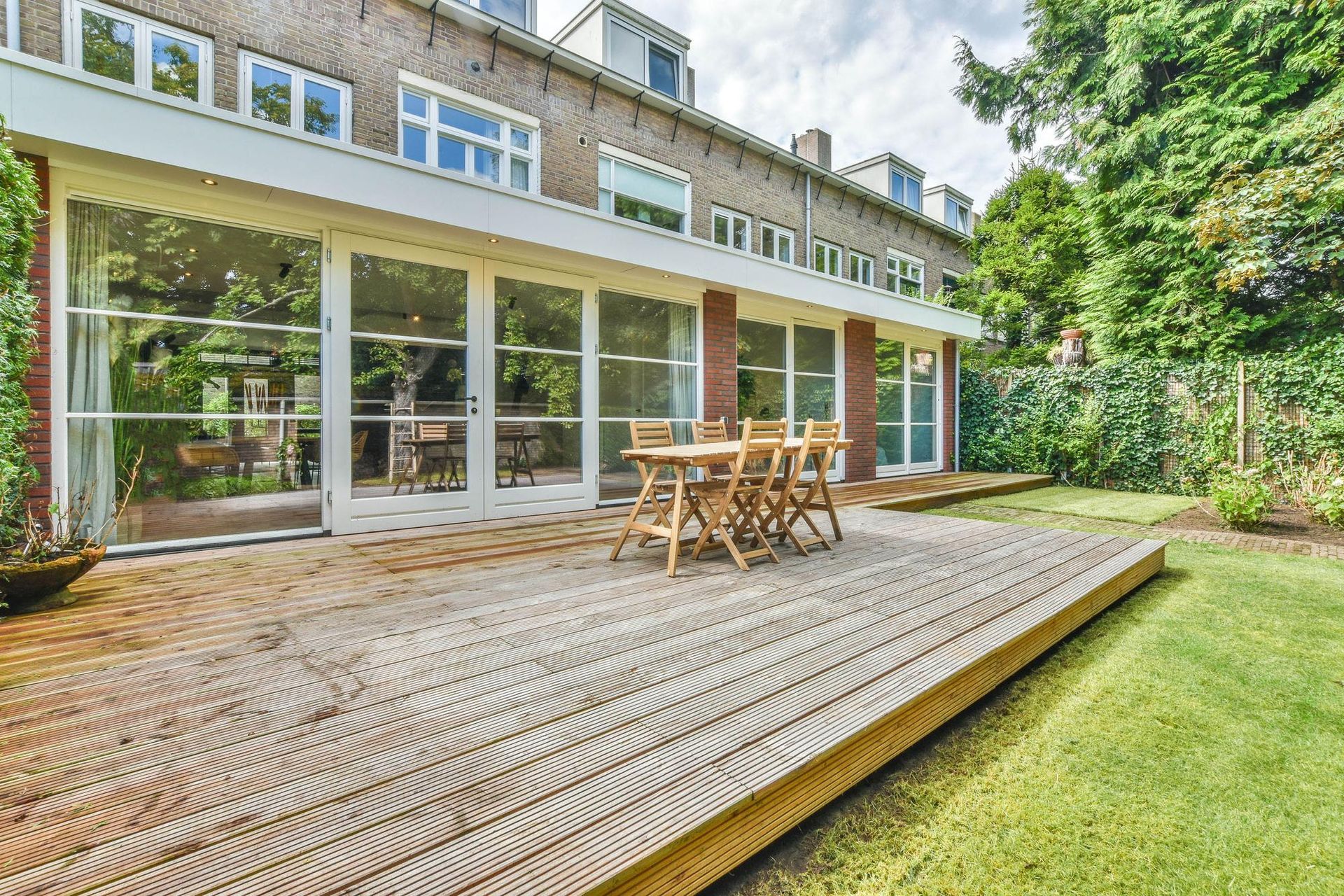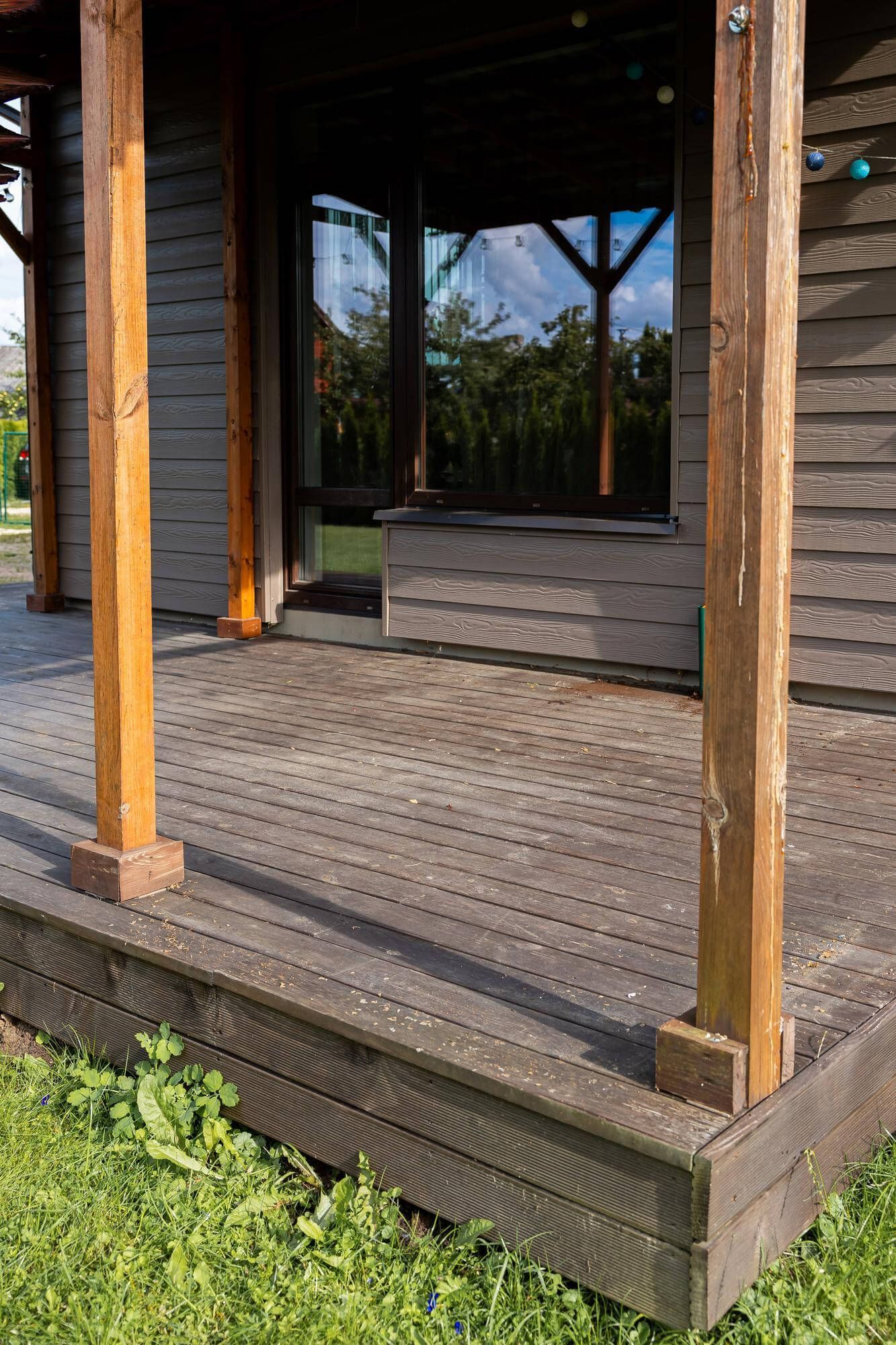Blog
Deck Safety Check: Identifying Potential Hazards
A well-maintained deck is the pride of any homeowner, providing an outdoor space for relaxation, entertainment, and family gatherings. However, a deck that isn't properly maintained can become a safety hazard. At
Hunt Home Remodeling, located in Bennington, NE, we specialize in deck building and remodeling, ensuring your outdoor space is safe and enjoyable. In this comprehensive guide, we'll walk you through how to identify potential hazards on your deck and provide tips for maintaining its safety.
Inspecting the Deck Structure
Checking for Rot and Decay
One of the most critical aspects of deck safety is ensuring that the structural components are free from rot and decay. Wood decks, in particular, are susceptible to moisture damage, leading to weakened boards and supports. To inspect for rot:
- Examine the Ledger Board: The ledger board is where the deck attaches to the house. Look for any signs of rot, water damage, or separation from the house.
- Probe the Joists and Beams: Use a screwdriver or an awl to poke the wood in various areas. Soft wood that gives easily is a sign of rot.
- Check the Posts: Ensure that the posts supporting the deck are solid and free from decay at the base, where they are most vulnerable to moisture.
Ensuring Solid Connections
Worn-out or rusty screws and nails can weaken your deck's structure. Check all bolts, screws, and nails to ensure they are secure and not rusted. Pay particular attention to:
- Ledger Board Fasteners: These should be lag screws or bolts, not nails, as nails can pull out over time.
- Joist Hangers: Ensure that joist hangers are in good condition and properly attached with appropriate nails or screws.
- Post-to-Beam Connections: Verify that posts are securely fastened to beams with metal connectors or appropriate hardware.
Evaluating Decking Material
Surface Inspection
The decking material itself should be regularly inspected for signs of wear and damage. Look for:
- Splintered or Cracked Boards: Replace any boards that are splintering or cracked to prevent injuries.
- Warping or Buckling: Warped boards can create tripping hazards and indicate underlying structural issues.
- Stains or Discoloration: These can be signs of water damage or mold growth, which can weaken the wood.
Material Lifespan
Different decking materials have varying lifespans. Knowing the expected durability of your decking material can help you anticipate when replacements might be necessary:
- Pressure-Treated Wood: Typically lasts 10-15 years but requires regular maintenance.
- Composite Decking: Can last 25-30 years with minimal maintenance.
- Cedar or Redwood: Lasts 15-20 years with proper care.
Ensuring Railing and Stairs Safety
Railing Stability
Railings are crucial for preventing falls, especially on elevated decks. Ensure that:
- Posts are Secure: Rail posts should be firmly anchored to the deck structure.
- Balusters are Intact: Spacing between balusters should be no more than 4 inches to prevent small children from squeezing through.
- Top Rails are Sturdy: The top rail should be able to withstand a significant amount of pressure without wobbling.
Stair Inspection
Stairs are another critical area that requires regular inspection:
- Check for Loose Steps: Ensure that all steps are securely attached and not wobbly.
- Inspect Treads and Risers: Look for any signs of wear or damage that could create tripping hazards.
- Verify Handrails: Handrails should be firmly attached and extend the full length of the stairs.
Assessing for Environmental Damage
Sun and Weather Exposure
Decks exposed to the elements can suffer from UV damage, leading to fading and weakening of the material. Regularly applying a UV-protective sealant can help prolong the life of your deck.
Moisture and Drainage
Proper drainage is essential to prevent water accumulation, which can lead to rot and mold growth:
- Ensure Proper Slope: The deck should have a slight slope away from the house to facilitate drainage.
- Clean Gutters and Downspouts: Make sure that gutters and downspouts direct water away from the deck.
- Use Waterproof Membranes: Consider installing waterproof membranes under the deck boards to protect the structure from water damage.
Regular Maintenance and Repairs
Cleaning and Sealing
Regular cleaning and sealing are vital to maintaining your deck's safety and appearance:
- Clean Annually: Use a deck cleaner to remove dirt, mold, and mildew.
- Seal Every Few Years: Apply a sealant or stain to protect the wood from moisture and UV damage.
Professional Inspections
Consider scheduling regular inspections with a professional, especially if your deck is older or has been subjected to harsh weather conditions. A professional can identify potential issues that might not be apparent during a visual inspection.
Why Choose Hunt Home Remodeling for Your Deck Needs?
At Hunt Home Remodeling, we are committed to providing top-quality deck building and remodeling services in Omaha and Bennington, NE. Our team of experts is dedicated to ensuring your deck is safe, beautiful, and durable. With years of experience and a passion for excellence, we are your go-to choice for all your deck needs, whether it be custom deck builds, deck repair, or deck installations.
Don't wait until small issues become major problems. Contact us today at
(402) 885-0738 to schedule a deck safety inspection or to discuss your deck remodeling project. Let us help you create a safe and inviting outdoor space for your family and friends to enjoy.
FAQ
How much does deck repair cost?
It's recommended to inspect your deck at least once a year, preferably in the spring after winter weather has subsided. It's also a good idea to check your deck after storms or heavy winds.
What are the signs that my deck needs repair or replacement?
Common signs include soft or rotting wood, loose or corroded fasteners, wobbly railings, and cracked or splintered boards. If you spot any of these problems, it's time to call in a professional for a thorough inspection.
How can I prevent my deck from rotting?
Regular maintenance is key. Clean your deck annually, apply a sealant every few years, ensure proper drainage, and inspect for signs of moisture damage regularly.
Can I repair my deck myself, or should I hire a professional?
While minor repairs can be done by homeowners, it's advisable to hire a professional for significant repairs or if you're unsure about the safety of your deck. Professionals have the expertise to ensure all repairs meet safety standards.
What are the benefits of composite decking over wood decking?
Composite decking is low maintenance, resistant to rot and insect damage, and has a longer lifespan compared to wood. While it may have a higher upfront cost, the durability and minimal maintenance requirements make it a cost-effective choice in the long run.

